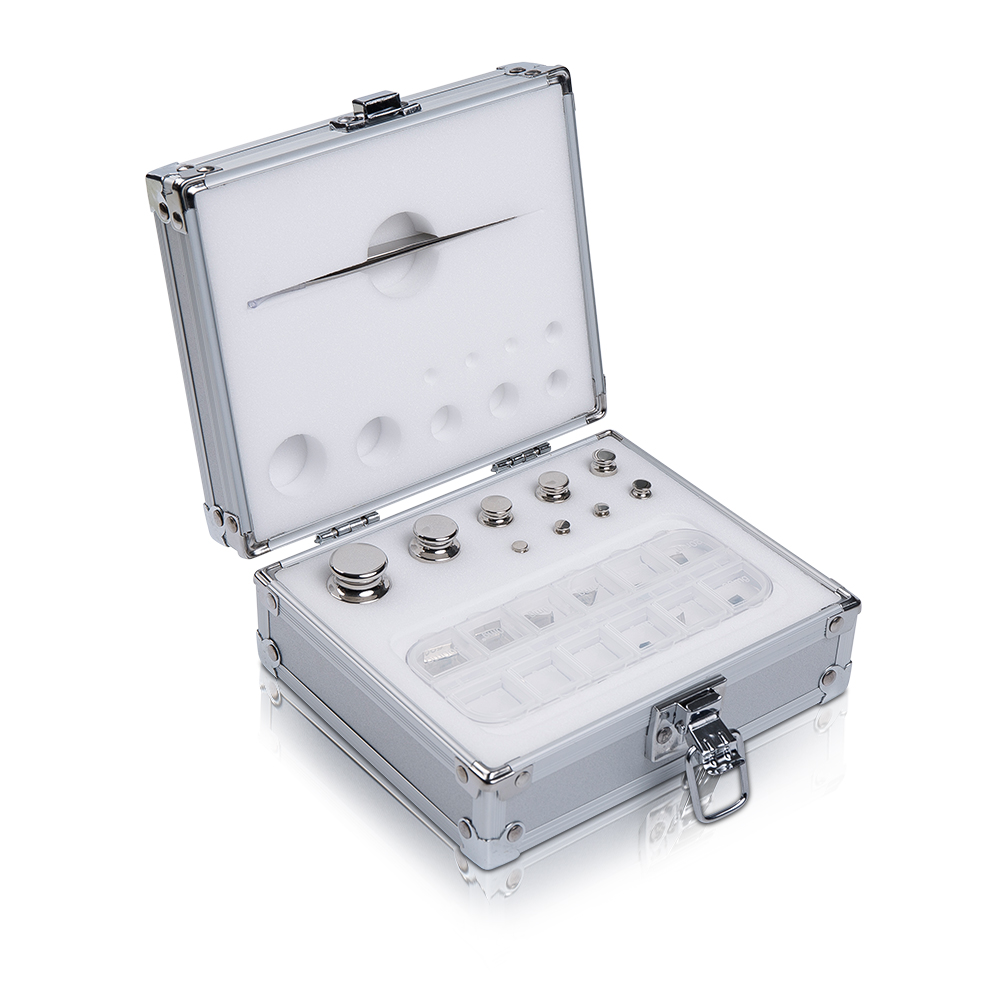Proper handling and storage of laboratory calibration weights are essential to maintain their accuracy and longevity. Calibration weights are highly sensitive and require specific care to prevent contamination, damage, or environmental influences that could affect their precision. Here are the best practices for handling and storing these weights:
Handling Practices:Use Gloves or Tweezers: Always handle calibration weights with clean gloves (preferably lint-free cotton) or with dedicated tweezers or forceps to avoid transferring oils, dirt, or moisture from your hands onto the weights.Avoid Direct Contact: Never touch the weights directly with bare hands, as skin oils can cause corrosion or add minute amounts of weight.Handle with Care: When moving or placing weights, handle them gently to avoid scratches, dents, or other forms of damage that could affect their mass and shape.
Minimize Air Currents: Handle weights in a controlled environment to prevent air currents that could cause contamination or slight weight changes.
Storage Conditions:Use Designated Storage Boxes: Store weights in their original cases or specially designed storage boxes with individual slots to protect them from physical damage and contamination.Avoid Exposure to Contaminants: Keep weights away from chemicals, dust, and other contaminants that could affect their surface or weight.Maintain a Stable Environment: Store weights in a temperature- and humidity-controlled environment to avoid expansion, contraction, or corrosion. A cool, dry place is ideal.Avoid Magnetic Fields: Store weights away from strong magnetic fields, which could magnetize or otherwise affect the material composition of the weights, especially if they are made of stainless steel or similar materials.
Cleaning and Maintenance:Regular Inspection: Routinely inspect weights for signs of contamination, scratches, corrosion, or other damage. Even minor defects can impact calibration accuracy.Gentle Cleaning: If weights become dirty, clean them carefully with a soft brush or lint-free cloth. Avoid using chemicals or abrasive materials unless specified by the manufacturer.Follow Manufacturer's Instructions: Use only recommended cleaning methods and materials provided by the manufacturer to prevent damage or alteration to the weights.Calibrate Regularly: Weights should be re-calibrated periodically according to their use and the guidelines provided by relevant standards (e.g., ASTM, OIML) to ensure continued accuracy.

Proper Use in Calibration:Use on a Clean, Stable Surface: Always place calibration weights on a clean and stable surface during use to prevent contamination and ensure accurate measurements.Avoid Dropping Weights: Dropping weights can cause dents or deformations, making them unusable for accurate calibration.Avoid Dragging Weights: Do not drag weights across surfaces; instead, lift them to move them to avoid scratching the weights or the surface.
Environmental Controls:Control Temperature and Humidity: Calibration weights should be stored and used in an environment where temperature and humidity are controlled and stable to avoid condensation, corrosion, or thermal expansion.Minimize Air Currents and Vibrations: Weighing environments should be free from air currents, vibrations, and other disturbances that could affect the accuracy of the weights and measurements.
Documentation and Labeling:Label Storage Locations: Clearly label storage containers or shelves for calibration weights to prevent mix-ups or misuse.Keep Documentation: Maintain accurate records of calibration weight usage, cleaning, and recalibration dates to track their condition and performance over time.
Transportation and Shipping:Use Protective Packaging: When transporting calibration weights, use protective packaging to prevent movement and protect the weights from shocks, temperature changes, and contamination.Handle with Care During Transport: Ensure that weights are transported in a way that prevents physical damage, such as being dropped or exposed to excessive vibrations.
Training and Awareness:Train Personnel: Ensure that all personnel who handle calibration weights are trained in proper handling, storage, and cleaning procedures to maintain their accuracy.Promote Awareness: Create awareness about the importance of calibration weight care among laboratory staff to minimize the risk of accidental damage or contamination.
By following these best practices, you can help ensure that laboratory calibration weights remain accurate and reliable, providing consistent and precise measurements for critical laboratory applications.

 English
English















